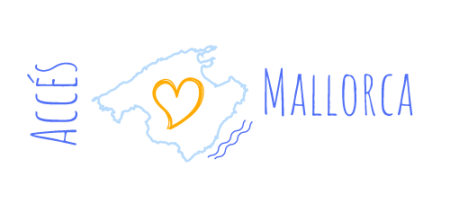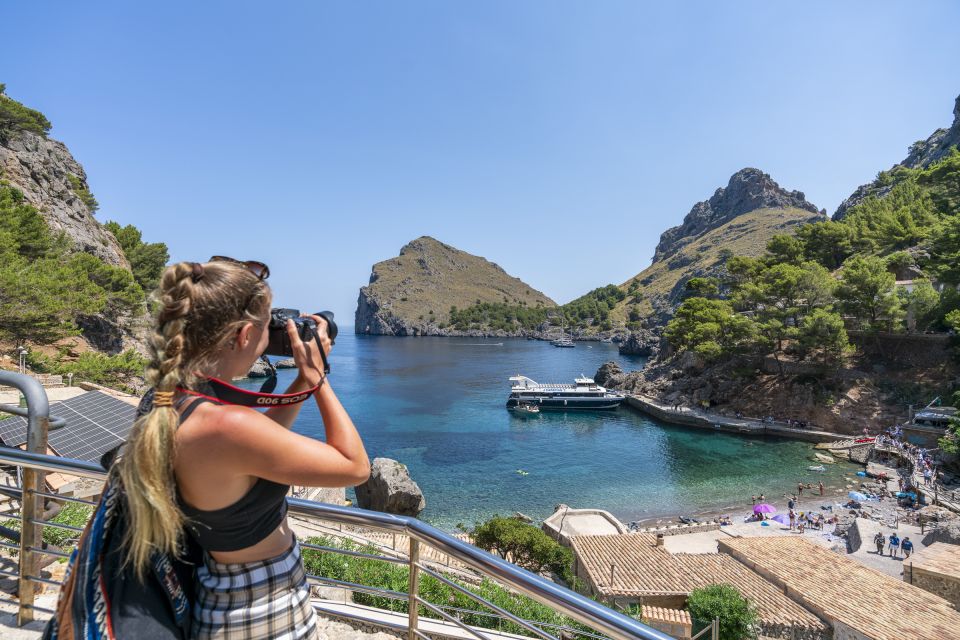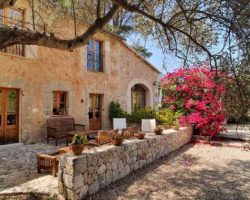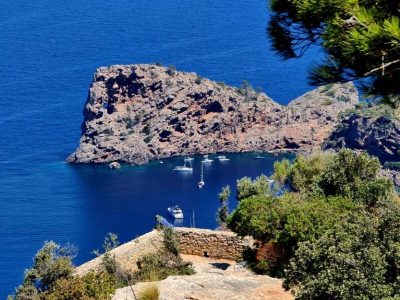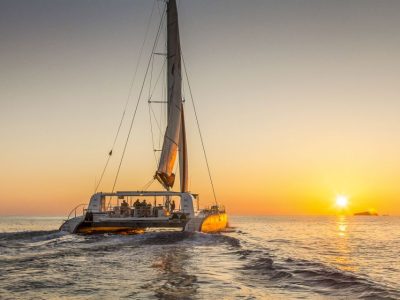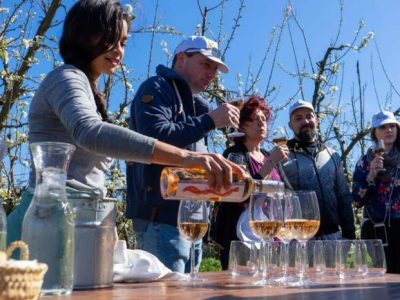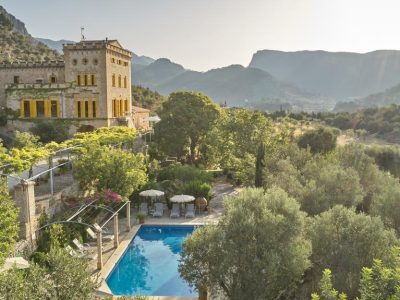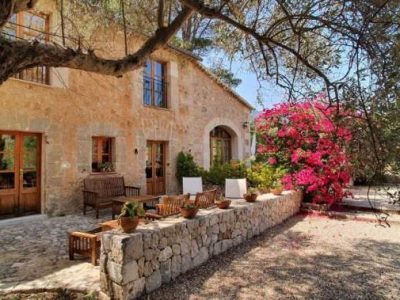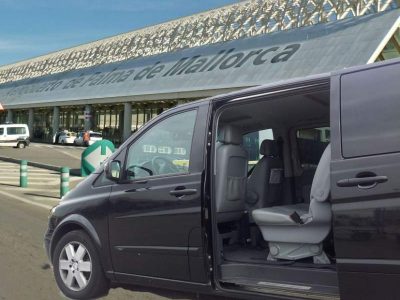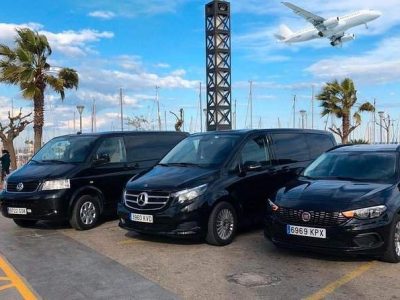All your holiday planning needs in one place, letting you book direct and benefit from official online rates
- Places To Go
- Things To Do
What’s Your Interest?
Traveling with kids
- Blog
Bunyola, Mallorca - Things to do and where to stay
Bunyola is an idyllic and picturesque area of Tramuntana.
Bunyola is one of the charming towns you will usually see in magazines, on postcards or in travel articles, something you do not see every day or everywhere.
- I want to go!
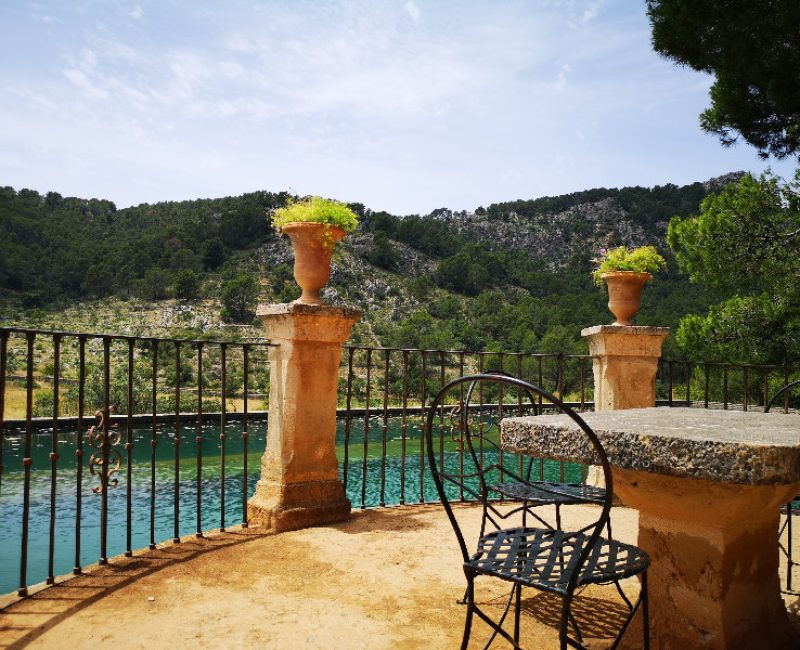
Why visit Bunyola
VISIT THE RAIXA ESTATE
Raixa is one of the most emblematic pieces of architecture found in Mallorca, and it is situated right here in the outskirts of Bunyola. The estate was built by a count of Montenegro, who incorporated various stylistics from the Mediterranean region in the architecture. Raixa has also been used as film scene for one of the adapted screenplays of Agatha Cristie’s famous detective, Hercule Poirot. Tours inside Raixa can be arranged where you get the opportunity to explore the fascinating items, furnitures and art pieces collected and remaining from the times when counts lived here.
JARDINS D’ALFABIA
One of the main attractions in Bunyola, is the magnificent botanical gardens of Alfabia and the old estate these gardens belong to. Enjoy strolling about among symphonies of colorful flowers and plants that flourish in these gardens, while you feel the harmony spreading through your body and mind. Jardins d’Alfabia is a great attraction for anyone interested in flowers and natural beauty, and want to learn about how the most wealthy people lived on the island during the early Middle Ages.
ENJOY A NOSTALGIC RIDE IN THE ANTIQUE TRAIN
One of the top tourist attractions in Mallorca is the antique train that connects Palma and Sóller. The more than 100 year-old mahogany cars bumps through the beautiful landscapes of Tramuntana, and makes a stop here in Bunyola on its way. During the ride, you will see some of the most amazing and picturesque valleys you could ever imagine. The train ride is an attraction for the entire family.
VISIT THE PARISH CHURCH OF SANT MATEU
The parish church of Sant Mateu (Saint Matthew) rises in the center of the village at the central square, Sa Placa, surrounded by cafes, bars and restaurants. On the exterior of the church, you can enjoy the beautiful baroque main entrance containing a sculpture of Saint Matthew, the painted tiles on the walls and the high bell tower. Inside the church, a treasury of religious art is exhibited in the Gothic chapels. The parish church of Bunyola is a great sight to see while you are here, it is beautiful on the inside as well as on the outside.
SON AMAR
One of the main attractions in Bunyola, is the Son Amar dinner and show. An evening of magic, acrobatic stunts, singing and dancing awaits you here. The Son Amar has several times been labeled “WORLD CLASS entertainment”, and that is exactly what it is. The show pays homage to so many different cultures through the amazing performances given by talented artists gathered from all over the planet.
EXPERIENCE TRAMUNTANA ON HORSEBACK
In Bunyola you will find Club Hípico La Gubia, which organizes lots of activities from their stables and folds. Here you can join an excursion on horseback in the beautiful mountain landscapes, take riding lessons or try horse therapy. The ride on horseback around the landscapes is a special sensory experience, where all of your senses are stimulated.
CYCLING
Cycling is a sport that is continuing to increase in popularity and, Mallorca is simply one of the best destinations for this sport. The area surrounding Bunyola and the rest of the Tramuntana mountains is perfect for challenging yourself while having fun and enjoying the amazing landscapes of the mountains and coasts. The hundreds of shapr hairpin turns, the weaving roads hugging the cliffs and the steep gradients will give you the rides of your life. Many professional cycling teams actually come to Mallorca to train. If you are not pro then don’t worry there are still plenty of good times ahead.
HIKING
There is no better way to discover the rich Balearic wildlife than by walking / hiking. A large number of marked trails will take you to the true secrets of the Tramuntana; the breathtaking vantage points, the hidden coves and beaches, the points of interest and through the unspoiled nature that has amazed people for centuries. In Bunyola you will find the Sa Comuna nature park, a very special place to meet wild (harmless) animals and discover flora.
GOLFING
One of Mallorca’s most beautiful golf courses is located right here in the Bunyola area, the Golf Son Termens. The 18-hole course is sure to both challenge and impress any golfer and any handicap with bunkers and stunning settings surrounded bu mountains.
IMAGE GALLERY
Enjoy some beautiful pictures from Bunyola
FAQ
- Finca Ses Fontanelles
- Holiday Home Can Tiona
- Unic – Turisme d’interior
Driving to the beaches near Port d’Andratx takes about 15 minutes from the old town.
Events in Bunyola
WEEKLY MARKET IN BUNYOLA
Every Saturday morning, the local market is held in Bunyola, from the main square of the village. This is a golden opportunity to let your senses be tempted by the hundreds of fresh fruits and veges, locally produced. The market also offers leather goods and crafts. Get yourself a refreshment, and go browse this scenic marketplace.
Annual events and happenings
As with any other Mallorcan village, Bunyola celebrates a range of cultural events during the year, such as feasts and fairs.
January
Beneïdes de Sant Antoni (Blessings of Saint Anthony)
As a true agricultural area, Bunyola celebrate the patron saint of domestic animals, Saint Antony, every year on January 16th and 17th. On the Sunday following the 17th, there are parades of carriages, horses, groups of dancing children and drummers going through the town.
Vigília de Sant Sebastià (Saint Sebastian)
On January 19th, Saint Sebastian is celebrated in the village of Palmayola. In the evening you can enjoy bonfires, toasts and traditional dances.
Festa des Quarteró
On the last Sunday of January, there is a big community lunch and folk dance show organized at one of the many possessions of the area, which varies from year to year.
April
Diumenge del Rams (Palm Sunday)
On Palma Sunday a big procession is held in Bunyola and a reenactment of the Via Crucis is performed.
Diumenge de l’Angel (Angel Sunday)
Angel Sunday is celebrated on the Sunday after Easter. On this day a mass, community lunch and traditional dances are held at the Alfabia estate.
Festes patronals de Sant Jordi (Festivities of Saint George)
On April 23rd, Day of Saint George, the village of Orient organize a series of cultural events including concerts, folk dances, exhibitions, guided tours and a solemn mass.
July
Festes de Santa Catalina Tomàs (Celebration of Santa Catalina Tomàs)
Santa Catalina Tomàs is Mallorca’s own saint and beatified in 1722, about 200 years after her death in the Santa Magdalena convent in Palma. Catalina Tomàs was born into a humble family of Valldemossa, but due to her religious dedication and, according to legend, to have spoken to the devil himself, she was accepted in the convent. She is celebrated and commemorated in Bunyola on July 28th, with a massive parade, concerts, traditional dances and snacks.
August
Festes parroquials de la Mare de Déu de les Neus (Celebration of the Virgin of Snow)
On the first weekend of August, the Virgin of Snow is celebrated in Bunyola. Some of the highlights include a solemn mass, a concert performed by children and traditional dances in the sa Plaça.
Festes patronals de la Mare de Déu d’Agost (Festivities of Our Lady of August)
In the village of Palmayola, on August the 15th, you can experience a range of cultural events and activities. There is usually a series of sports competitions, games, workshops, children’s activities, shows, concerts, exhibitions and fireworks.
Festes de Sa Coma i Son Curt
The small hamlets of Sa Coma and Son Curt, both celebrate the summer with a town festival in the middle of August. Open-air community dinners, exhibitions, markets, shows and contests are all part of an extensive program spanning over an entire week.
Where: Sa Coma, Son Curt
When: Second week of August
September
Festes Patronals de Sant Mateu (Festivities of Saint Matthew)
On September 21st, the patron saint of Bunyola, Sant Mateu, is celebrated in the mountain town. A wide range of cultural activities are on the program such as theatrical performances, traditional dances, a solidarity market, concerts, exhibitions, sports competitions, games and workshops for the children. There is always a jolly and relaxing atmosphere in the streets on this day.
November
Fira de Santa Catalina (Santa Catalina fair)
The Santa Catalina fair is held during late November, traditionally around the 24th of November. The fair is a typical agricultural autumn fair with focus on local products, organic produce, environment, ecology and artisan products. There are also a range of performances like concerts and dances.
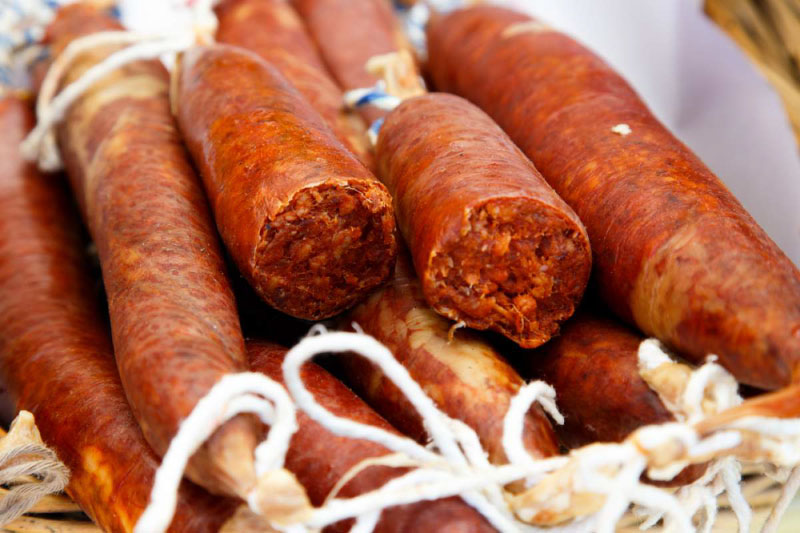
Support Local
Supporting local communities during your travels can have a profound impact. Stock up with groceries locally, stop in an artisan shop or enjoy a refreshment at a restaurant or bar. Now more than ever, these small businesses need support from travelers near and far.
Get to know the area of Bunyola
About Bunyola
Bunyola is a town and municipality located in the Tramuntana region of Mallorca. In addition to the town, the municipality also comprise the villages and hamlets of Palmayola, Orient, sa Font Seca and Sa Coma, which has a total of 6,809 inhabitants (2019).
The name
While we do not know much about the Roman settlement in the Bunyola area, several ethnologists believe the name may originate from the Latin word balneola, which translates to ‘small bath’, while others claim that the name must be from Vineola, which means ‘small vineyard’.
However, many would argue that the name dates back to the Arab dominance of the island (c. 902 – 1229), where the name was derived from bunia, bunyân or banya, all referring to different meanings of ‘dry stone or lime construction’.
History of Bunyola
Prehistory
The area of present day Bunyola has been inhabited by humans and indigenous Balearic mammals since prehistoric times. One particular interesting fact about the prehistory of Bunyola, is that remains of a Myotragus Baleàricus, a cave goat from the Pliocene time that was extincted around the time of the first human occupation of the island (c. 3000 BC), was discovered when the sa Comuna road was laid. The goat is often referred to as a dwarf goat due to its rather small size that most of all reminisce us of an enlarged rabbit.
The history of human habitation in Bunyola dates back to c. 2,500 – 1,400 BC, in a time when people lived in caves. On the Balearic Islands, this period is known as the pre-Talayotic due to the far more significant Talayotic period, a time from around 1300-1100 BC – 123 BC.
It was the Talayotic culture that was epochal to beginning of population in the area, a culture that was characterized by megalithic constructions known as “talaiots“, hence the name. These talaiots were tower-like cyclopean constructions, either circular or quadrangular, that functioned as lookouts and could be more than 20 meters high. In Catalan “talaia” means watchtower. Some of the remains of this culture within the municipal border include Son Vidal, Son Perot and Son Palau.
However, the most remarkable talaiotic construction in the area is the one called “Comasema” named after the forest it is located in. It is situated at the foothills of the l’Ofre, na Franquesa and sa Rateta range and on the other side, the mountain of Puig de Mors. The Comasema is one of the most well-preserved talaiots found in the Tramuntana range, but also unique to other talaiots because of the platformed construction technique built on the slopes of the mountain. From the top of the talaiot, it’s easy to see the strategic point of view of the construction as you have excellent views over the area. Another curious fact about the Comasema, is that it is built fairly close to water streams which tells us about an agricultural community from that time.
Roman times
In 123 BC, Roman general Quintus Cecili Metellus and his army conquered the archipelago from the indigenous peoples and founded two cities, Palma and Pol-lèntia (Alcúdia). However, the new Roman rulers coexisted with most of the indigenous tribes, presumably used as slaves to work on cultivation of crops and trained as warriors for the Roman army. The Romans also introduced vines to the island as wine was already a popular beverage in the Roman empire. Also, the Romans knew how to extract oil from olives and used the tree for making tools and weapons. With this, the Mediterranean triad was complete (olives, vines and wheat).
However, this was not the only interesting thing about the Roman presence in Bunyola, also the galena mine of Son Creu, current Sa Mina des Moros, was exploited by the Romans who found ways to illuminate the mines by drilling holes which allowed daylight to enter. It is likely that it was the Byzantine Romans who exploited the mines during the 6th and 7th centuries when they re-conquered parts of Mallorca after a period of Vandals sacking the island when Rome fell.
Islamic period
In 902, the Balearic archipelago was annexed to the Emirate of Cordoba, when Moorish nobleman Issam Al-Khawlaní captured the islands after a series of centuries without any formal rulers.
With the Islamic conquest, the island was divided in multiple jurisdictions to make it easier to administrate and collect taxes from the new Moorish settlers, primarily clans of farmers arriving from present day Algeria, Morocco and Andalusia. Each jurisdiction was called a “Juz” and Bunyola came under the Juz d’ Bunyûla-Mûsû, which also comprised Valldemossa, Deià and the eastern parts of Esporles.
More than 16 farmsteads were erected in the area during Islamic occupation, whereof the biggest and most important was the Alfabia, Raxa, Beniadatz, Beniatzar, Beniforani, Lluch, Comasema and Aurient. The Moors continued the agricultural heritage left from Roman times and even introduced new crops like artichokes, rice and saffron to the island. What was really epochal during this time, was the creation of water pipes (quanats), cisterns for storing water and water mills, which made irrigation far more efficient and gave rise to horticultural farms.
The Aragonese-Catalan conquest
In 1229, Mallorca was officially conquered by Jaume I of Aragón, whom with an army of 21,000 soldiers completely sacked the capital of Madina (Palma). During the brutal siege of the capital, about 3,000 armed men and 15,000 women and children managed to escape and flee to the Tramuntana, Llevant and even Menorca. In Tramuntana the resistance was led by Xuaip de Xivert whom organized resistance in the rocky castles of Alaró and Pollenca (Castell d’Alaró and Castell del Rei respectively), as well as in the mountainous village of Al-Yibal, or Almallutx, present day Escorca.
As of 1231, all Moorish resistance of Mallorca had fallen to the troops of Jaume. In the following year Jaume divided the Muslim jurisdictions in eight parts and distributed them among knights, counts and church according to the pact made prior to the conquest. The area of present day Bunyola and Orient came to belong to Nunó Sanç, count of Roussillon and Cerdanya and uncle of Jaume. Following his death in 1242, his assets were transferred to Jaume and the royal heritage in which it remained until the fall of the Mallorcan kingdom in 1349.
The former Moorish farmsteads were quickly parted, given and sold to new landowners who came from Aragón and Catalonia, in order to re-populate the areas quickly. Some of the agricultural activities continued such as the production of olive oil which was the most important product of the area.
The revolts of the foreign and the Brotherhood
During the 15th and 16th century, Bunyola grew in population under the control of feudal lords and noble citizens who owned much land. In 1450, a revolt known as “Revolta Forana” meaning the revolt of the foreign, came to mark the history of the island. To simplify this rather complex situation, it was based on a big gap between the social classes of the island created by droughts, war and rights to use and administrate land, but also corruption scandals by the nobility and the Crown of Aragón. This eventually escalated in 1450 when a group of peasants and day-laborers rose against the nobility committing crimes against the families and making the countryside an insecure place. This was going on for almost three years, until the king sent Italian mercenaries to the island to stop the revolt and kill the leaders.
In 1520, corruption became the main turning point of a new conflict, this time much more violent and came to be the first civil war of Mallorca. It was the artisans guilds that, like seem on the mainland, created a parallel society to end the corruption and relieve the fiscal pressure. They put a siege on multiple towns and villages all over the island, they even managed to siege parts of Palma, at that time Ciutat de Mallorca, where they cut off the water supply to the city and forced their way to the governor’s office. Ruthless crimes were committed and blood was shed all over the island for almost two years. The revolt ended when Carles V intervened and sent his troops to the island. The royal troops arrived in the Port of Alcúdia from where they went to Pollenca and then to Sa Pobla where they easily fought down the rebellion army.
In both cases, Bunyola suffered the consequences of hard repression causing a massive tax load that made many families poorer.
The modern age
In 1578, Bunyola had a population of about 500 inhabitants. The economy of Bunyola was linked to agricultural activities such as olive oil production and exploitation of the natural resources found in the forest. Charcoal was another great industry in the local area which was shipped off to Palma.
Hunting game such as rabbits was – and still is – a popular eat in Mallorca and the sa Comuna forest has always been a great place to catch these by using special hunting “filats” (nets) that was developed.
In 1912, the Palma – Sóller railway was inaugurated, Ferrocarril de Sóller, and with the construction of a train station in Bunyola, it contributed to the growing industrialization of the area.
Contemporary times
Bunyola is one of those areas that has remained partly agricultural and partly touristic in the contemporary history of Mallorca. Even though tourism, particularly active tourism, is the predominant factor in the local economy, olive oil production remain the third largest on the island.
Practical Info
Useful Numbers
Emergency: 112
National police: 091
Local police: 092
Guarda civil: 062
Fire: 080
Maritime emergencies: 900 202 202
Town Hall: +34 971 61 30 07
Public Transport
Bus lines: 220
Power Supply
220V
